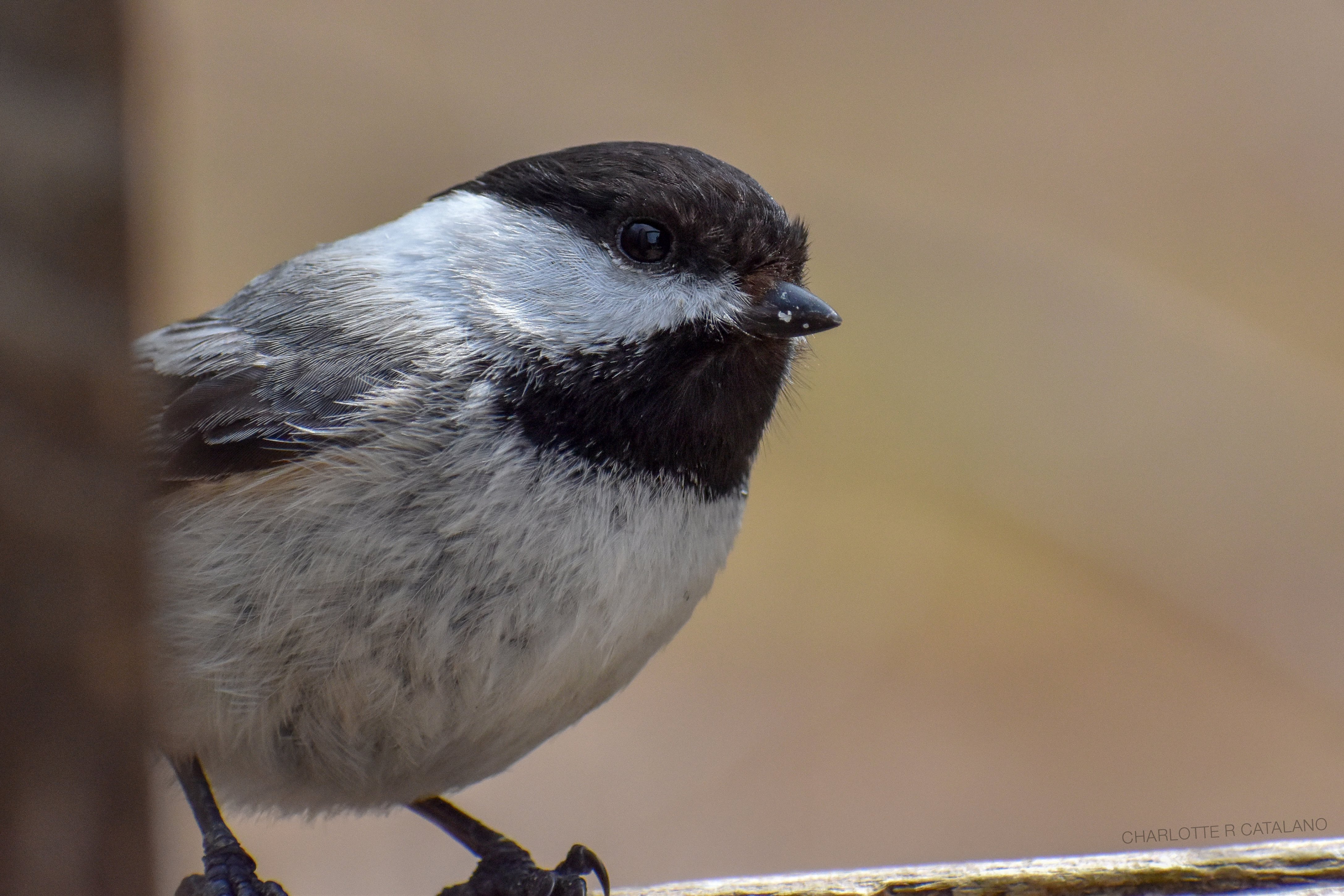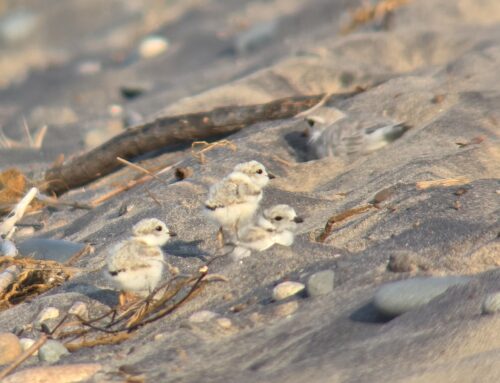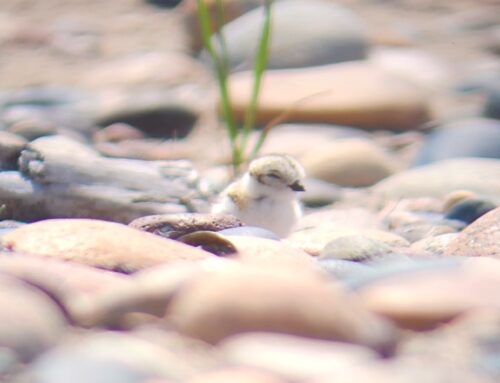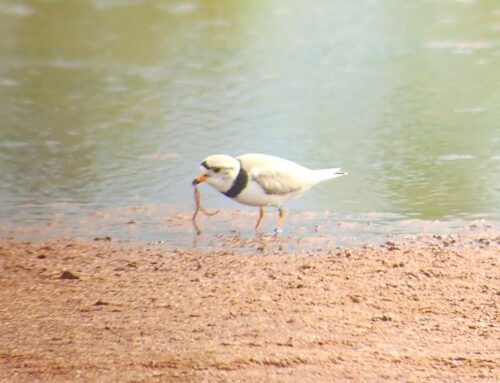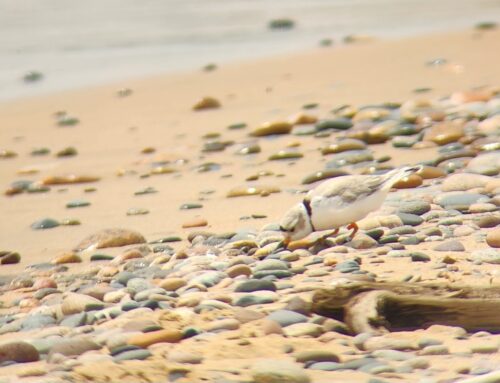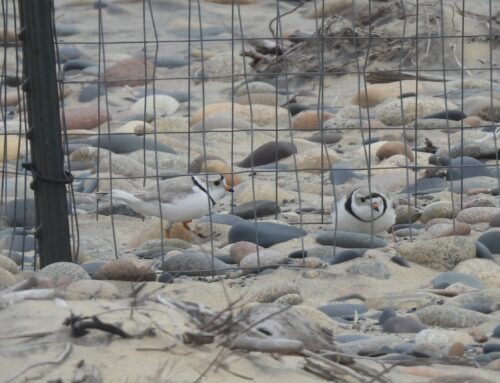Between May 5 and May 7, 24 new bird species for the season were documented at the Point, with the majority appearing on May 5 following a night and half day of southeast winds.
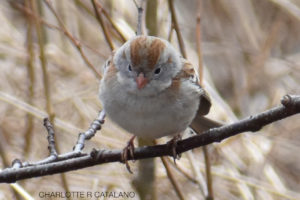
The first Field Sparrow of the season. The sparrows are not common at the Point, so this one was particularly exciting. Photo by Charlotte R. Catalano
The new species are: Northern Shoveler, Gadwall, Surf Scoter, Eastern Whip-poor-will, Piping Plover, Least Sandpiper, Spotted Sandpiper, Bonaparte’s Gull, Common Tern, American White Pelican, Great Egret, Eastern Kingbird, Northern Rough-winged Swallow, Boreal Chickadee, Blue-gray Gnatcatcher, Clay-colored Sparrow, Field Sparrow, White-crowned Sparrow, Lincoln’s Sparrow, Black-and-white Warbler, Palm Warbler, Black-throated Green Warbler, Rose-breasted Grosbeak, and Eurasian Tree Sparrow.
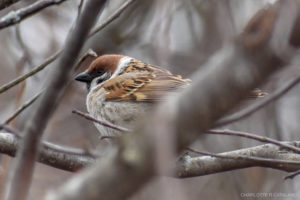
One of three Eurasian Tree Sparrow at the Point. A native bird of Europe and Asia, the bird was introduced in the 1870’s and has not posed as much of an issue as its cousin the House Sparrow has in America. Photo by Charlotte R. Catalano
What many people do not realize is that most songbirds migrate at night with science indicating passerines use stars to navigate to their breeding and/or wintering grounds. This means that if the winds are right — light southeast winds with clear to mostly clear skies like the night of May 4 to May 5 — the Point is apt to get an influx of migrants. What this also means is that humans can play a huge role in helping birds safely reach their destination with one simple action: flipping off a light switch.
As most of you assuredly know, lights create light pollution. What you might not realize is how this affects bird migration. As stated above, birds migrate at night with the help of stars. The more light pollution there is an area, the less visible the stars are. Additionally, strong sources of light pollution, such as cities, suburbs, and towns, can disorient and draw birds toward the light, not unlike moths to a streetlight, drawing the avifauna out and away from their intended route. This is further compounded when windows, whether lit or not, come into play, reflecting nature or sky and leading to deadly window strikes.
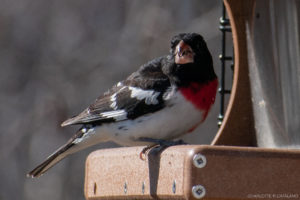
The first Rose-breasted Grosbeak at the feeders behind the Owls Roost giftshop. Photo by Charlotte R. Catalano
Perhaps this migration season you will consider turning out the lights and adding bird-safe decals to your window to help our feathered friends successfully reach their destination.
– Charlotte R. Catalano, WPBO Field Ornithologist
Featured Photo: Large flocks of Black-capped Chickadee have been moving through the Point, with 131 recorded on May 6. Photo by Charlotte R. Catalano
You can find out more about what you can do to reduce bird-window collisions at michiganaudubon.org.

